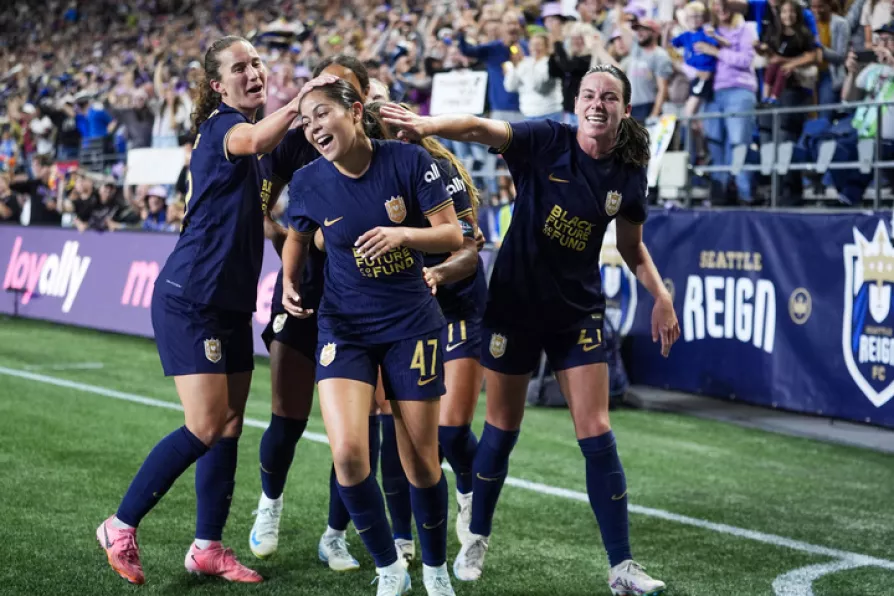
 Seattle Reign forward Emeri Adames celebrates with teammates after scoring against North Carolina Courage, August 2024
Seattle Reign forward Emeri Adames celebrates with teammates after scoring against North Carolina Courage, August 2024
LAST week, the National Women’s Soccer League Players Association (NWSLPA) announced a landmark collective bargaining agreement (CBA) that made professional leagues and player unions across US sports sit up and take note.
It will see the National Women’s Soccer League (NWSL) become the first major US professional sports league to get rid of the entry draft, in which a league’s teams line up to choose amateur players, mostly emerging from the college system, to sign for them.
Among numerous improvements on the previous deal, the new CBA also introduced free agency for all players when their contracts expire, rather than players needing to play a certain number of NWSL seasons before being granted full free agency, and abolished the practice of players having no say in which team they are traded to and when.

With climate change, commercial overload and endless fixtures, footballers are being pushed to breaking point. It’s time their unions became a more powerful, unified force, writes JAMES NALTON

JAMES NALTON writes how at the heart of the big apple, the beautiful game exists as something more community-oriented, which could benefit hugely under mayoral candidate Zohran Mamdani












